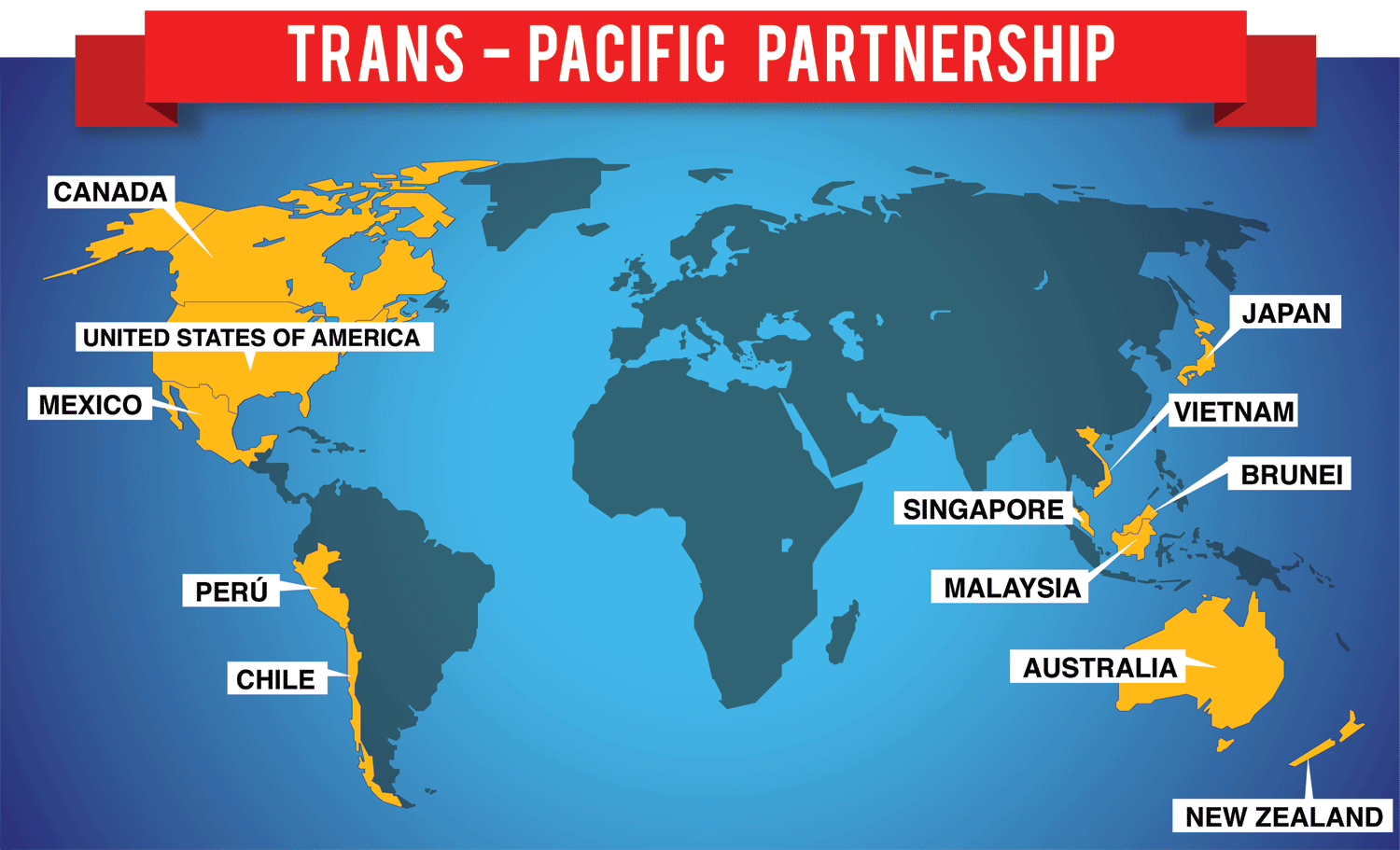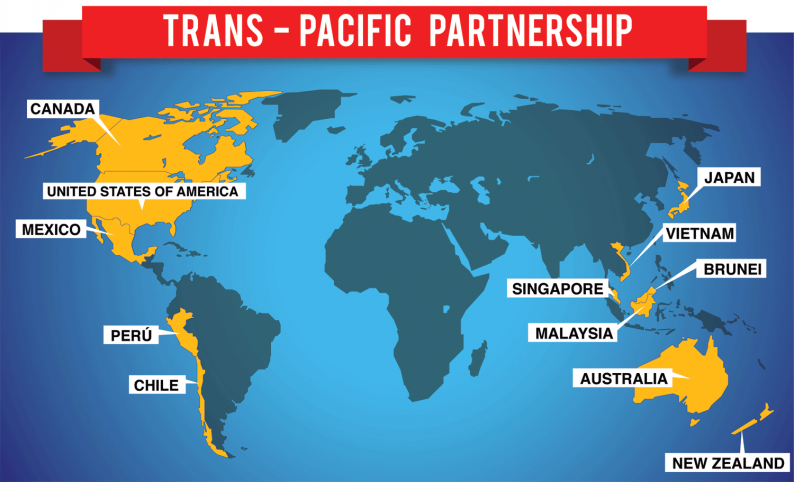A controversial trade agreement, the Trans Pacific Partnership, has been agreed by the trade ministers of its twelve constituent countries and now moves to a ratification process in member states. The signatory nations now have two years to obtain any necessary endorsement of the deal at governmental/parliamentary level before it can come into full force.

TPP is a trade deal which embraces some 40% of global trade. The signatory states are Japan, Malaysia, Vietnam, Singapore, Brunei, Australia, New Zealand, Canada, Mexico, Chile, Peru and the United States. President Obama is a key supporter of TPP. In his opinion, it will safeguard US jobs: “Partnership would give the United States an advantage over other leading economies, namely China. TPP allows America – and not countries like China – to write the rules of the road in the 21st Century, which is especially important in a region as dynamic as the Asia-Pacific. We should get TPP done this year and give more American workers the shot at success they deserve and help more American businesses compete and win around the world.” he said in a statement released on Wednesday.
TPP has involved a lengthy, and often fraught, negotiation process. According to Michael Froman, US Trade Representative, TPP could boost US economic growth by up to $100 billion per year. “After five years of negotiation, signing the TPP is an important milestone in our efforts to set high-standard rules of the road in the Asia Pacific region and more generally, and to deliver an agreement that will benefit American workers, farmers and businesses,” he said.
Critics of the deal claim that it is overly beneficial to businesses at the expense of society and that it will cause migration of jobs from developed to developing states within the grouping. It is likely that the ratification process will not be a formality in some states – notably the USA where some sections of the Republican party are strongly opposed to it.













Leave A Comment